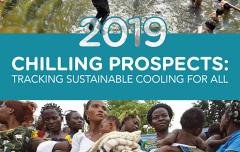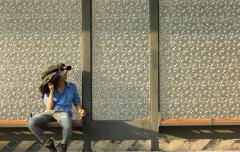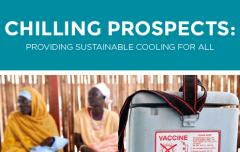Cooling as a Service: A disruptive business model for sustainable cooling
Currently, air conditioning accounts for about 10 percent of all electricity use worldwide and some developing countries could see electricity demand for air conditioning grow up to five times by 2050. [1] With sustainable solutions, it is possible to reduce energy consumption for air conditioning by 20 percent in 2050 compared to 2016. But we can’t do this without delivering those solutions in the developing world at affordable prices. Cooling as a Service (CaaS) aims to solve this problem.
CaaS is a pay-as-you-go model for cooling that enables customers to base their investment decision on the lifecycle cost rather than on the purchase price of the equipment. Put simply, CaaS lowers the upfront cost of a highly efficient device to make it an easier purchase – but it is still a relatively nascent business model in low-income countries.
Helping companies adopt this new business model
The CaaS Initiative, a partnership between Kigali Cooling Efficient Program and the Basel Agency for Sustainable Energy, was selected by the Global Innovation Lab for Climate Finance as one of the most innovative, actionable and scalable financial instruments.
In January 2020, the two partners launched a call for applications to companies that would like to adopt CaaS as a new business model. Last week, five winners were announced who will receive free technical assistance to integrate Cooling as a Service into their business lines and to pilot the model. At the end of the incubator program, the aim is to have providers fully equipped to launch their first demonstration project. The five winners that will implement CaaS into their business lines come from Argentina, India, Grenada, Costa Rica and Nigeria. Find out more.
The financial model behind Cooling as a Service
The CaaS model doesn’t just lower up-front costs and makes efficient devices more affordable. It uses those payments to recapitalize the technology providers who own the equipment and encourages manufacturers to design products for reuse rather than obsolescence.
Innovative approach in Africa
An example of a business model to lower upfront costs in practice can be found in Africa. In July 2019, the Rwanda Green Fund and the Rwanda Business Development Fund, in partnership with UN Environment’s United for Efficiency initiative and the Basel Agency for Sustainable Energy, launched the ‘Coolease’ financial mechanism to promote the adoption of energy-efficient and climate-friendly cooling solutions in Rwanda. Like CaaS it works to lower upfront costs, but uses a technology lease with the provider committing to maintenance. While the approach is primarily aimed at enterprises, it has potential for scale across African markets and penetration into the individual consumer market.
Closing the cooling access gap with CaaS
Chilling Prospects: Tracking Sustainable Cooling for All 2019 found that across the 52 high-impact countries 1.05 billion people remain at high risk from a lack of access to cooling. A further 2.2 billion people pose a different kind of risk: they will soon be able to purchase the most affordable air conditioner or refrigerator, but price sensitivity and limited purchasing options mean they favor devices that are likely to be inefficient, threatening energy systems and resulting in increased GHG emissions.
Access to cooling should not be a luxury. As populations grow and temperatures rise, the health and economic risks associated with cooling are growing exponentially. An innovative business model like CaaS can help high-risk populations get access to cooling quicker and provide access to more energy-efficient and climate-friendly cooling systems for all of us.
[1] The Future of Cooling (IEA) and Solving the Global Cooling Challenge (Rocky Mountain Institute)




